Each visual communicator will have their own individual ways of thinking, how they want to deliver their message across and what they aim to put across to their audience. What visual communicators use to put this message across are called zeitgeist. The definition of a zeitgeist is the spirit of the age or spirit of the time; in which time influences the message which is being conveyed across through images.
An example of a film which includes a range of zeitgeists could be the remakes of the well-known series of The Batman. The film clearly puts great emphasis on the old comic book style colours, which were very popular during the early 60's. In the film, Robin Hood is perceived as a man whose good looks excite immature romantic feelings in women. This can be compared to the impact the group 'Beatles' had on the female population in around the same era.
Principle 2- Delivery
In order for any visual communicator to be successful, they will have to find themselves a clear platform which they will have to follow. They are likely to work with clients or other designers to form a collaboration of their own portfolios. The platform which each visual communicator agrees to follow may vary from a wide range of media such as, magazines, editorial design, print making, book illustrations, poster advertisements, fashion, branding, logo designs and much more. Visual communicators and designers will also promote themselves via the internet, doing things such as blogging which enables them to add their current work to show clients and updates to show the progress they have been making through out the years. This makes them known, meaning it will be easier for them to be noticed and create more links with the outside design industries. As an illustrator you should always ask yourself questions before starting any project to ensure you have all the knowledge you could possibly need to do the best of your ability.
Question illustrators can ask themselves would be:-
- Where will my work be seen?
- What is my work trying to portray?
- Where is my work going to be used?
One of my all time favorite illustrator who inspires me the most is David Downton. David is a fashion illustrator and studied at Canterbury ( Foundation year 1977- 1978) and Wolverhampton (BA hons illustration/graphics 1979-1981). In 1984 he moved to Brighton and began his illustration career. For the next 12 years - a period he describes as 'wagging my tail when the phone rang' - he worked on a wide variety of projects ranging from advertising and packaging to illustrating fiction, cook books and, occasionally, fashion.
In 1996, the Financial Times commissioned him to draw at the couture shows and since then David has become known principally as a fashion illustrator. His reports from the shows have been seen internationally, in the US, China, Australia and the Middle East, as well as in almost every leading UK broadsheet and supplement.
David’s commercial client list includes: Tiffany & Co, Bloomingdales, Barney’s, Harrods, Top Shop, Chanel, Dior, L’Oreal, Vogue, Harper’s Bazaar, V Magazine and the V&A Museum. In 1998, he began working on a portfolio of portraits (from life) of some of the world’s most beautiful women, including Erin O’Connor, Paloma Picasso, Catherine Deneuve, Linda Evangelista, Carmen Dell'Orefice, Iman and Dita Von Teese.
In 2007, David launched Pourquoi Pas? the first ever journal of Fashion Illustration. He is a visiting Professor at London College of Fashion, and in April 2009 received an honory doctorate from the Academy of Art University, San Francisco.
Downton also blogs so that his latest work is updated and shown to his clients. This ensures that he is not missing out on any new opportunities which will come his way from new clients or designers.
Below are a series of drawings commissioned by Chanel to record their first ever catwalk show in London, 2008.
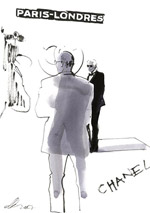
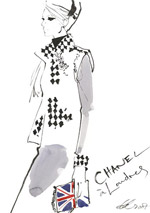
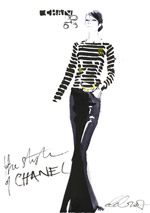
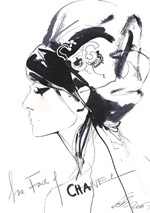
Drawings of Erin O'Connor and Lily Cole at One Aldwych, London, 2005.
Images from Top shop Atelier campaign. Drawn by David Downton.
Images from Top shop Atelier campaign. Drawn by David Downton.

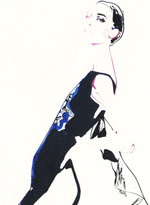
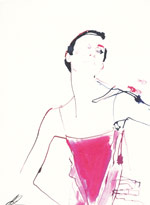
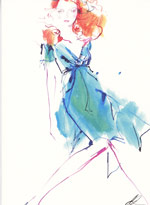


No comments:
Post a Comment